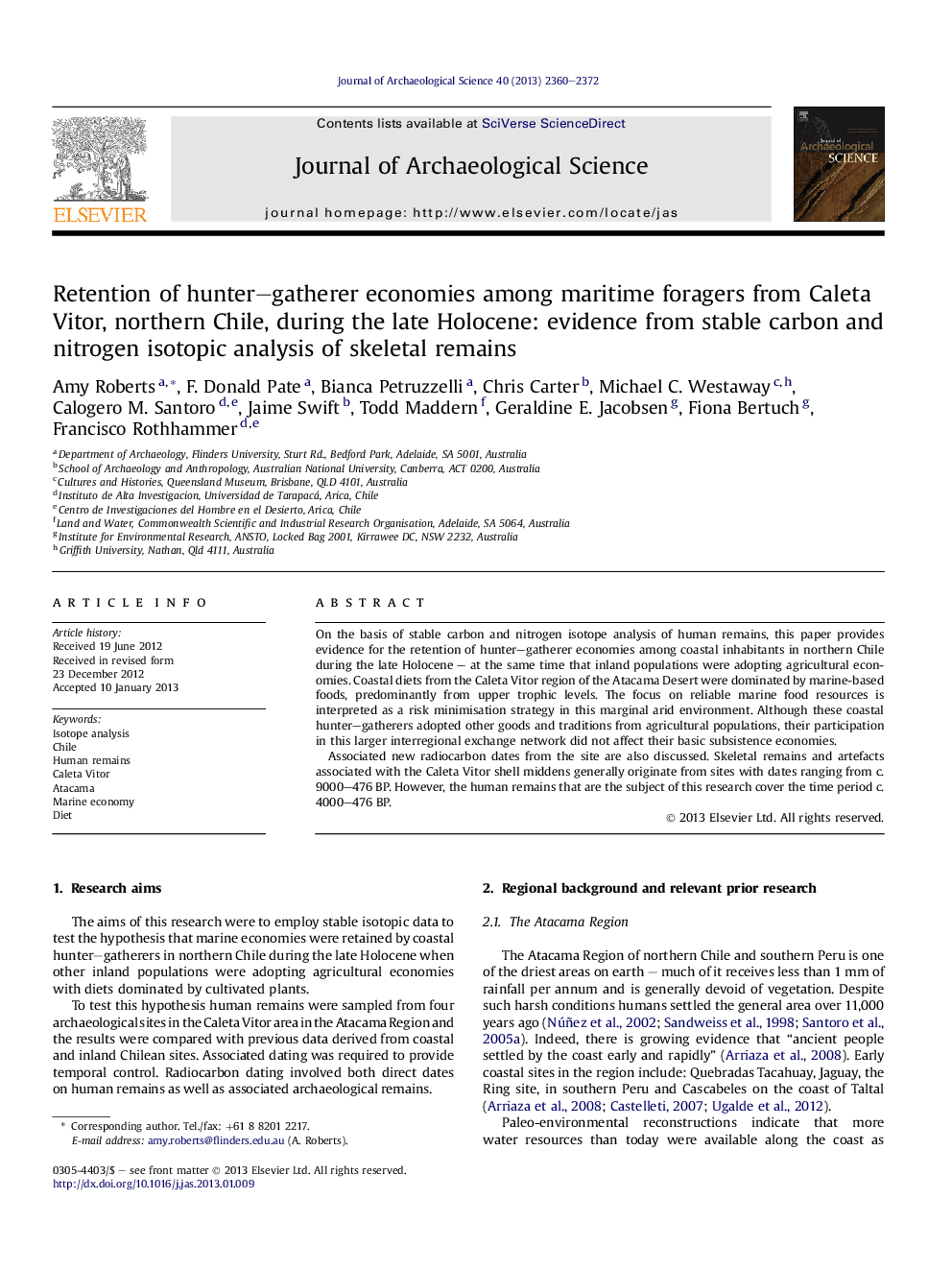| Article ID | Journal | Published Year | Pages | File Type |
|---|---|---|---|---|
| 1035551 | Journal of Archaeological Science | 2013 | 13 Pages |
On the basis of stable carbon and nitrogen isotope analysis of human remains, this paper provides evidence for the retention of hunter–gatherer economies among coastal inhabitants in northern Chile during the late Holocene – at the same time that inland populations were adopting agricultural economies. Coastal diets from the Caleta Vitor region of the Atacama Desert were dominated by marine-based foods, predominantly from upper trophic levels. The focus on reliable marine food resources is interpreted as a risk minimisation strategy in this marginal arid environment. Although these coastal hunter–gatherers adopted other goods and traditions from agricultural populations, their participation in this larger interregional exchange network did not affect their basic subsistence economies.Associated new radiocarbon dates from the site are also discussed. Skeletal remains and artefacts associated with the Caleta Vitor shell middens generally originate from sites with dates ranging from c. 9000–476 BP. However, the human remains that are the subject of this research cover the time period c. 4000–476 BP.
► Stable carbon and nitrogen isotope analysis of human remains from Caleta Vitor, Chile. ► Evidence for diets dominated by marine-foods. ► New dates reported ranging from c. 9000 to 476 BP.
